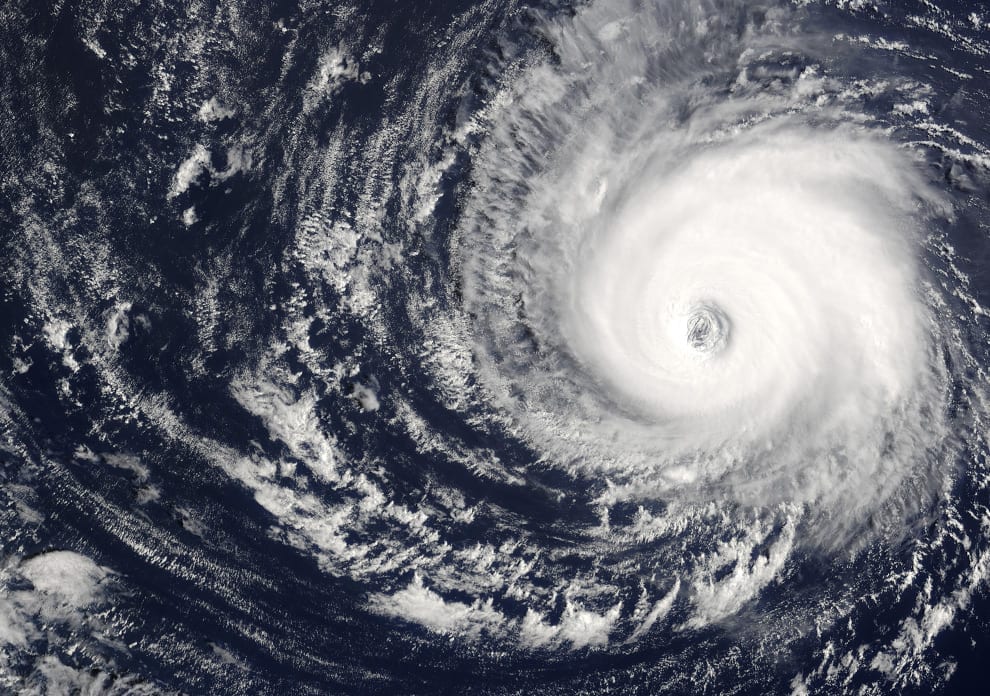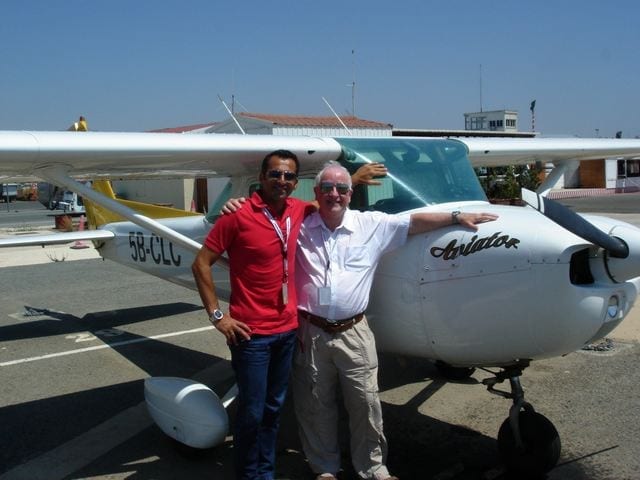A long, long time ago, when I was training for a commercial license, my instructor had some words of wisdom for me: “Don’t ever fly for a living. It will ruin flying for you. You like it too much.” But he was wrong. After flying for a major airline more than 28 years, I reached the mandatory retirement age. I loved every minute of it, and I had no desire to retire. So, I began to research options so that I could continue commercial flying.
As I scanned the internet, I came across a flying opportunity in New Zealand. A small airline was looking for a chief pilot. New Zealand businesses are required to draw from the domestic pool before seeking qualified individuals from elsewhere. Their problem was that a chief pilot would have to have airline experience, as well as business management experience. Prior to airline flying, I managed an advertising agency and other businesses. Also, I have been living a dual career as both an airline pilot and an attorney. After several online interviews and written applications, I was hired.
When you get hired in New Zealand, you do not just hop on the next flight Down Under. It is a long and arduous process. First, the employer must apply to the government to get approval after submitting evidence that they made an exhaustive attempt to hire from within the country. Then the applicant must submit a request for a work visa. Many documents accompany the application, including FBI forms and international forms that confirm no criminal record. Additionally, financial records must be submitted that prove the applicant has enough money to purchase an airline ticket back home in case you become a “persona non grata.”
Still not done. They want to be sure that you do not become a burden to their health care system. You must be examined by a designated doctor in the United States that works with the New Zealand immigration department. You are checked for tuberculosis as well as other ailments. The examination is not cheap.
After immigration hurdles were cleared, the next challenge was obtaining approval from the NZ-CAA, their equivalent of our FAA. In New Zealand, you do not just train for an ATPL or CPL. You must justify why you need such a license. The NZ-CAA contracts out the application process to a company called ASPEQ. The small airline that hired me operated under 135-type rules and therefore only a CPL was required. Since I hold an ATP license in the United States, I first attempted to obtain the ATPL.
However, after finding out that an ATPL would cost over $20,000 (no, that is not a misprint), I decided that the CPL would be sufficient. Despite having over 23,000 hours flying jet airliners all over the world for a major airline, I had to fill out an application that broke down my various flight time in detail. “How much cross-country time do you have?” Also, a six page “Fit and Proper” form had to be submitted, proving that I was worthy of the CPL. The scariest part was that I had to send my last two logbooks to New Zealand in advance—not copies—only originals were acceptable. The applications were an eight-month ordeal. After dealing with the NZ-CAA, I have a newfound appreciation for our FAA.
The CPL written exam had to be scheduled long in advance, as locations and dates are limited. Many of their flight rules are different than ICAO standards. Additionally, distances are expressed in metric. For instance, VFR minimum visibility is 5 kilometers. The CPL written was a challenge, as it would be in any country. The First-Class Medical Certificate exam also had to be scheduled long in advance. The closest CAA-approved doctor was 100 kilometers from the remote town where I was to live, over a windy mountain road that famously had 365 turns.
The CPL checkride is a bit different. Unlike the United States, maneuvers such as chandelles and lazy eights are not part of the CPL checkride. In New Zealand, maneuvers include steep turns, emergency landings, and short field and soft field takeoffs and landings. With mountains as a constant factor, wind and weather conditions in New Zealand can be quite challenging. That was certainly the case during my checkride.
As the ride started in a Piper PA-28 Archer, winds were gusting to 20 knots. However, during the ride, winds picked up to gusts that exceeded 40 knots. I experienced the worst turbulence I have ever encountered in a GA airplane. During the checkride, we first attempted to land on runway 36, but crosswinds shifted to the west, forcing a go-around. The second landing attempt was to a short gravel runway 29. However, another go-around became necessary, as winds shifted yet again, this time to the south.
By this time, the turbulence had become moderate to severe. I no longer cared about the checkride. I just wanted to get out of the sky. Lining up for runway 18, I was a bit over speed to compensate for extreme airspeed fluctuations, but the winds were within parameters, and with such strong headwinds, the ground speed was slow. I put the plane down and got it stopped. Apparently, the examiner was satisfied with my decision making and he certainly got to see that I knew how to go around. I obtained my New Zealand CPL. In New Zealand, you must be type-rated for every airplane you fly. After being checked out in each airplane, I now hold a type rating in a Piper PA-28 Archer, a Piper PA-34 Seneca, and an GA-8 AirVan.
VFR flying in New Zealand is bush pilot flying. Flying VFR literally means by visual reference; there is no VFR radio navigation. Everything is based upon geographic references. Large zones have a given frequency and you report your position at key reporting points. Foreign pilots must not only get used to the New Zealand accent, but also pilots must get to know different terms. In New Zealand, you do not “back taxi,” you “back track.” You do not “enter the pattern,” you “enter the circuit.” If you are landing on a paved runway 24, you are landing on the runway 24 “seal,” meaning it is not grass, but rather sealed with pavement. Many runways and taxiways are grass, even at larger airports with towers.
New Zealand flying is mountain flying. This is especially true on the South Island, which is almost entirely mountainous. As an airline pilot, I never had to be greatly concerned with mountain flying. Jet airliners spend most of the time in the flight levels, well above the terrain. Before heading Down Under, I studied mountain flying procedures as much as possible. The New Zealand airline had a mountain flying expert who provided recurrent mountain flying training every year.
IFR flying in the United States is a breeze compared to New Zealand. The entire Air Traffic Control system consists of 19 towers, two radar centres (yes that is the correct spelling), and 816 employees. IFR flight plans must be filed at least 30 minutes in advance—no “pop-up” IFR. While flying IFR, you must call ahead to the next sector 10 minutes prior to entering the airspace. Additionally, there is a fee for flying IFR. While general aviation seems to be thriving and growing in New Zealand, very few GA flights are conducted under IFR.
Typical flights for the airline consisted of destinations on the South Island and to Wellington, which is the nation’s second largest city, located on the south end of the North Island. The airline also provided flying tours of the area. Of course, sightseeing flights were always conducted VFR. Whenever possible, all flights were conducted VFR as there was a fee for IFR filing and because the more costly twin-engine aircraft was required for IFR. By regulation, all passengers and crew members are required to wear life preservers.
A flying gig in another country can be a great experience. However, before you go, do your homework. Check to see what immigration and pilot license requirements must be met. Also, check the tax laws. While you may not get double-taxed while being employed in another country, some countries have the right to tax your worldwide income. Rest assured, no matter where you fly, you will come away with a newfound appreciation for the freedom we have flying in the USA.
- Words to live by, learned from a master - December 21, 2021
- A flying gig in New Zealand - February 24, 2021














Two of my “Kiwi” pilot friends left NZ because of their countries aviation policies
No doubt, they found our FAA to be a breath of fresh air.
Interesting read! The good ole USA still provides plenty of opportunities for any aspiring aviator! Thanks for sharing your experiences!
Interesting article, Gary. I’m from New Zealand, been in the US for close to 30 years, now in the Denver area (ASEL, Instrument). I never did any flying in New Zealand, but have some pilot friends there that have similar stories to your’s. I hope those Kiwis treat you well while you are down there!
“After dealing with the NZ-CAA, I have a newfound appreciation for our FAA.”
Dear Gary, try to deal with the Spanish CAA and you’ll find NZ’s wonderful.
Interesting read. Here in Canada we also “back track” and “enter the circuit”. Eight years ago while vacationing in NZ I was fortunate to have the opportunity to rent a C172 in Queenstown on the South Island and got to experience the gusty conditions and rough ride around the mountains. A condition for renting the plane was that I also hire an instructor to ride in the right seat while my wife sat in the back. One hour with the instructor cost me $400 NZD but it was worth every penny. And quite frankly I had a hard time understanding all that was being said on the radio given the accents so flying with the instructor made thing easy and much more enjoyable.
I guess that the British colonies all have similar lingo. I was glad to get the instruction as well. Thanks to you, and all for.the comments.